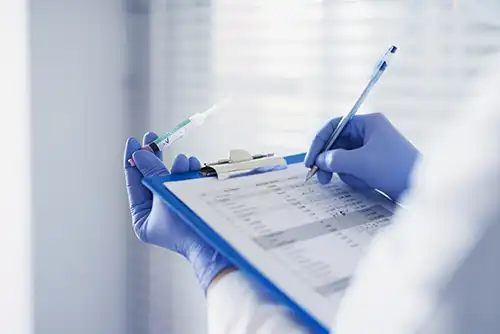Drug & Alcohol Testing Consortium
All drivers who hold a Commercial Driver’s License (CDL) and who operate a Commercial Motor Vehicle (CMV) are subject to alcohol and controlled substances testing as required by United States Department of Transportation (Federal Motor Carrier Safety Administration) regulations. The NHMTA Drug and Alcohol testing consortium helps members meet these regulations.
Services include a seven-panel drug screen for pre-employment testing, random testing, reasonable suspicion testing, post-accident testing, overnight courier services and the required medical review officer services. The consortium’s Third Party Administrator (TPA), DISA, handles these services for NHMTA consortium participants.
NHMTA has negotiated reduced fees for collections to keep your per-test costs down. By joining the consortium, your per-test costs will be lower than what is offered outside the consortium. A comprehensive network of collection sites is available throughout the state.
Finally, NHMTA can provide you with two hours of mandatory supervisor training for an additional charge.
Contact the NHMTA office at (603) 224-7337 with questions about the drug and alcohol testing consortium.

When Are Tests Required?
Pre-employment
This test applies to CDL drivers applicants.
Random
Unannounced testing of CDL drivers based on a random selection of drivers. The lottery chooses names from a list of all drivers in a pool. Drivers are notified of selection must submit to testing. This process ensures that all drivers have an equal chance of being selected at any time.
The selection over 12 months with a 50 percent annual sample rate for eligible drivers. Random alcohol testing should be conducted at an annualized rate of 10 percent.
Post Accident
This test applies to CDL drivers cited for a moving violation arising from a reportable accident or when a fatality occurs. This test must be administered within 32 hours of the accident. Alcohol testing must be conducted within 8 hours of an accident.
Reasonable cause
This test applies when a trained supervisor or company official observes a driver acting in a manner that indicates the use of alcohol or controlled substances. The supervisor must prepare and sign a statement documenting the observation within 24 hours. Testing should be coordinated as soon as possible following the reasonable cause determination.
Return to Duty
Should a driver test positive, before returning to work for a company, the driver must submit to and pass a return-to-duty alcohol and/or controlled substance test.
Follow up
After the driver has passed a return-to-duty test, the driver is subject to follow-up testing at a minimum of six tests in the first twelve months upon returning to duty.
Frequently Asked Questions
Testing Procedures
The mandatory testing procedures are based on those established by the United States Department of Health and Human Services.
These procedures include:
- Urine sample collection
- Laboratory procedures
- Alcohol test procedures
- Reporting of results and confidential record-keeping of final test results and statistical data.
Only laboratories certified by the Substance Abuse Mental Health Services Administration (SAMHSA) may be used. These procedures exist to safeguard the accuracy and protect privacy of drivers.
Companies and drivers must participate honestly in the process. A driver who refuses to submit to testing is considered “unqualified to drive.” A driver who has tested positive test results with a qualified medical review officer (MRO). The driver will be allowed to explain any special circumstances to the MRO. The MRO is responsible for reporting the results to the companies drug program management for action.
All drivers determined to be positive by the MRO must be referred to a substance abuse professional (SAP) for counseling.
In addition to the testing procedures, §382 of the FMCSA regulations requires all drivers, supervisors and company officials to undergo a training program on the use and abuse of alcohol and controlled substances.
